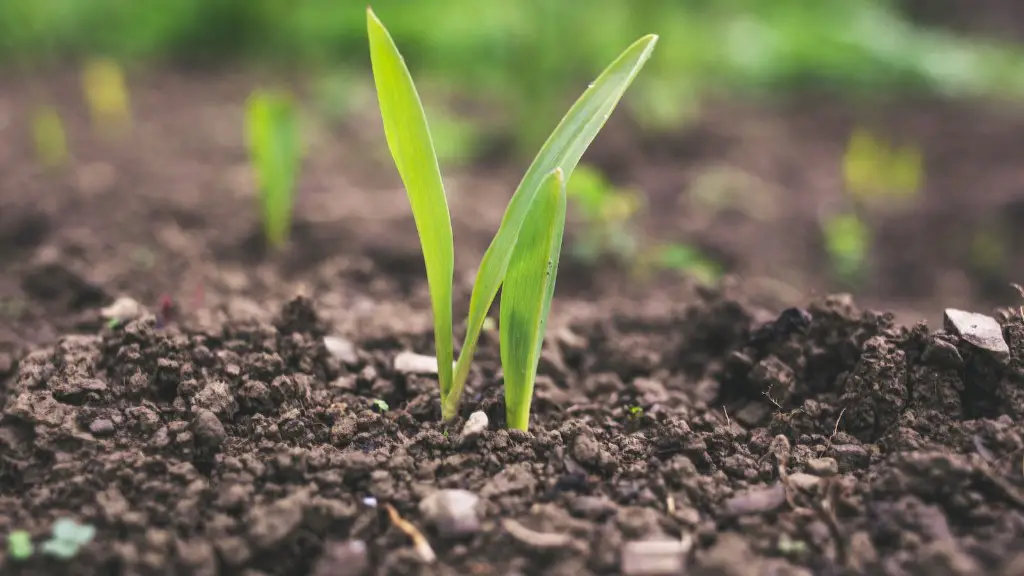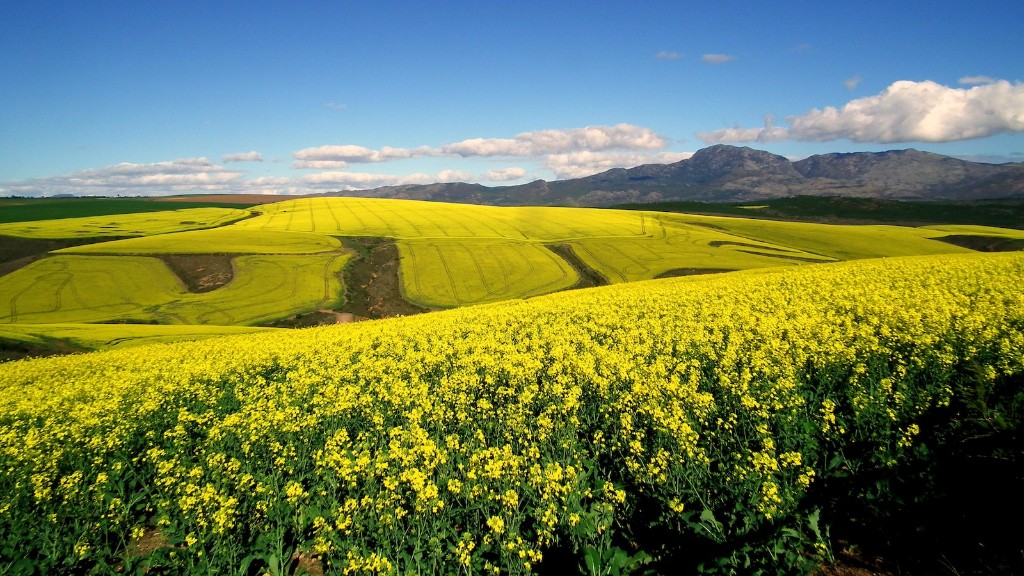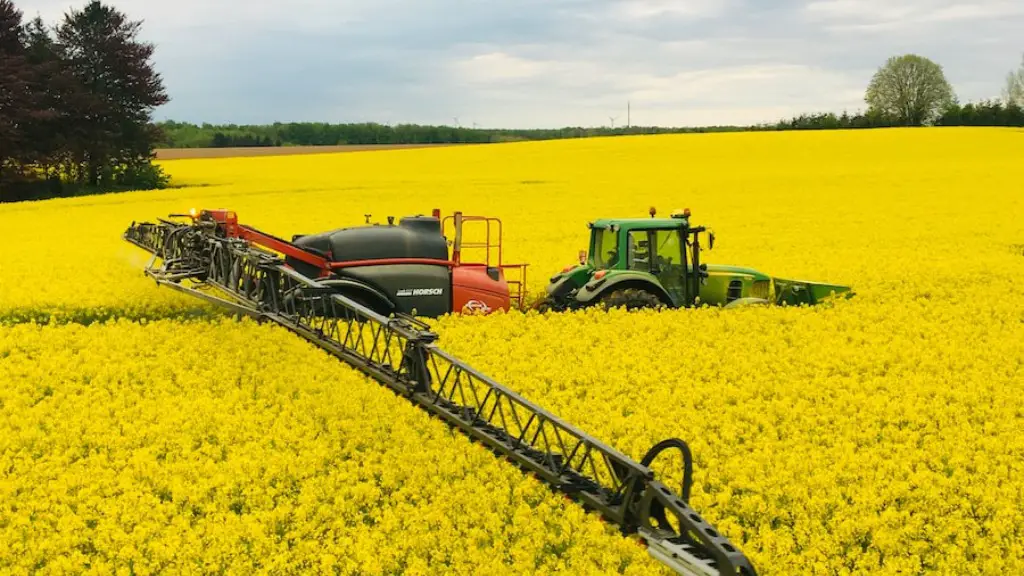Drilling is a farming technique used most often for planting seeds such as grains, beans, oats, and some vegetable crops. This method generally follows a rectangular pattern and involves several steps, each designed to ensure proper seed placement and optimal crop growth. The first step in drilling is to prepare the soil by scratching the surface with a harrow before the seed drill. This job is completed by a tractor-drawn harrow which breaks clods and levels the soil. This prepares a better seed bed, which helps both penetration and seed placement. The second step is to place the seed and fertilizer into the machine. The next step is to pull the machine, allowing it to drop the seed into the furrow that it creates. After the seed has been in place, the machine disc closes the furrow, ensuring the seed is in contact with the moist soil. Drilling can also increase soil organic matter by introducing organic fertilizers while planting. Finally, the field is rolled to deal with water infiltration and improve the germination rate.
Origin and History of Drilling Method
The drilling method was first used in Europe in the early 1800s. Since then, it has become a widely used farming technique due to its advantages over traditional methods such as hand-casting. The introduction of the mechanical seed drill revolutionized the agricultural industry, making it possible to plant seed more uniformly and at a faster rate. Moreover, the ability to control the drill, such as the seed and fertilizer placement, gave farmers more control over the crop’s yields. Additionally, the machine opened doors for more accurate and faster seed selection, leading to higher crop diversity.
Advantages of Drilling Method
The drilling method is advantageous because of its a number of factors, most of which have to do with the efficiency and accuracy of the method. The even distribution of the seed and fertilizer is one of the main benefits as it reduces the risk of clumping and ensures a more even crop distribution. Furthermore, the machine is capable of reaching narrow areas of the field, allowing for more thorough planting without manually spreading seed in the areas. Additionally, the machine requires less labor, saving time and cost. This method also saves the time of manually replanting any seeds that were washed away in rain.
Uses of Drilling Method in Agriculture
The drill method is used for planting a variety of seeds, such as grains, beans, oats, and some vegetables, as well as for adding fertilizers or organic matters. Proponents of organic farming generally use this technique for planting organic seeds. Some other uses of the drilling method include planting continuous crops year after year which help build better soil quality, controlling weeds and pest, and providing efficient drainage. Moreover, the depths of seed placement can be adjusted based on the crop, helping farmers achieve better growth and yields.
Farming Technologies in Drilling Machines
Modern farming is heavily dependent on a range of farming technologies, and this is equally true for drilling machines. This includes technologies such as GPS and GIS enabled guidance systems to precisely target the area of the field that needs to be cooked. Furthermore, technology such as intelligent crop sensors, auto shutoff and operation savings are currently available in some drill machines that help farmers monitor the health of their crops and ensure efficient use of their resources.
How to Select and Use Drilling Machines
When selecting a drilling machine, it is advised to identify the crop, size of the field, and the intended uses. The desired seed rate should also be considered, as the machine should be able to adequately meet the farmer’s requirements. The cost of the machine should be compared to the cost of labor, fuel, and other costs associated with manual seeding. Additionally, maintenance of the machines should be taken into account to ensure they stay in good condition. The machine should also be tested on the type of soil and seeding environment to ensure compatibility.
Drilling Method versus Manual Seeding
While manual seeding is still an option, the drilling method offers several advantages over manual seeding. Manual seeding is slow and labor intensive, with the risk of leaving large gaps or over seeding. In addition, the soil is often not as evenly spread out and there is a risk of missing certain areas. The drilling method is also more environmentally conscious, reducing manual labor, fuel, and other resources. Furthermore, the uniform and accurate planting of the machine offers greater potential for a safer and healthier crop.
Modern Power Sources of Drilling Machines
Modern drilling machines are powered by a number of energy sources, including diesel, electric, and solar. Diesel and electric sources are common farming options because they provide reliable power and are generally cheaper than solar. However, solar energy is becoming increasingly popular due to its sustainability and cost-effectiveness. Furthermore, solar powered drilling machines are low maintenance and have no additional fuel costs.
Storage and Cleaning of Drilling Machines
Storing drill machines can be a bit of an issue, as the area for setting up the machine must be clear and free of debris. Additionally, the tractor and the machine should be disconnected from each other and all the parts should be secured to avoid damage. Furthermore, machines should be regularly cleaned to ensure they don’t render their use. Washing with warm water and a mild detergent is recommended, as this helps to prevent any mechanical damage or corrosion. Finally, lubrication should be regularly carried out to ensure smooth operation.


